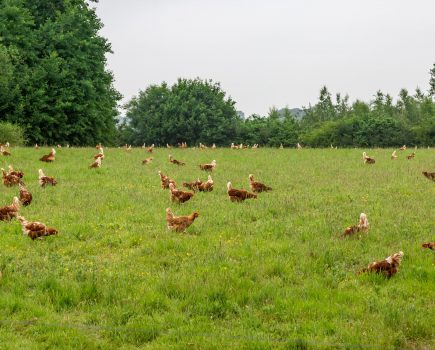Marie-Claire Kidd pays a visit to pupils at a Yorkshire school and is suprised to see how much time they spend in the veg patches, tending the fruit trees, around the hen houses and they love it!
If you see a pupil at Shelley First School walking around with a chicken on their shoulder, don’t be surprised. The resident hens are allowed to range freely throughout the grounds, and they enjoy lots of fuss and treats at break times.
The pupils at this village school near Huddersfield are reaping the rewards of a drive towards outdoor education, initiated by recently retired teacher Linda Green. Over the past five years the school has transformed its grounds to include an allotment, a greenhouse, seven raised gardens – one for each class – and, of course, a chicken run.
Head teacher Debra Knowles says: “One of our curriculum drivers is outdoor learning. The children have been helping us to develop the outdoor environment. It’s part of their SMSC [Spiritual Moral Social Cultural] education.
“The idea was it was about caring for something, taking responsibility, but for a lot of our kids it’s been awe and wonder. We see a lot of love between the children and the chickens.”
As well as learning more about where the things they eat come from, pupils use food production to learn about everything from mathematics and budgeting skills to literacy.
They weigh produce for sale and use the money they make to buy seeds, chicken feed and straw for bedding. Their fundraising efforts have been complimented by the Morrisons Lets Grow scheme, which has provided class sets of children’s size equipment including gloves, trowels, hoes and secateurs.
The vegetable beds have done well so far, producing potatoes, carrots, onions, leeks, pumpkins and more. The children have also planted fruit trees, raspberries and strawberries.
Where possible, the produce they grow is used in the school kitchens. “One day everything on the plate was from the garden bar the meat,” says Mrs Green.
Chicken manure helps speed up the processes in the school’s compost heaps.
The gardens have also fed into the school’s literacy programme, with a group of budding journalists producing a blog which documents the chickens’ adventures and shows off their talents as writers.
“It’s such an entertaining and well-written blog that it’s become famous,” says Mrs Knowles. “When you say you work here people say, ‘oh yes, the chicken blog’.”
The journalism club encourages the children to write about anything that inspires them.
For animal lovers Amelia, Emily, Jessica and Sophie, deciding what to focus on was easy. Emily says: “We thought we’d do a lot of stuff about different animals from around the world but we decided to concentrate on the chickens because they are here. It’s good fun.”
There has been lots to report, including the tale of Gingernut the runaway chicken, who sadly is still missing, and a dramatic attack by a fox, which killed some of the birds.
Emily and Amelia have even been inspired to create a film starring their feathered friend Speckly.
Originally there were seven chickens, with each class naming one and taking responsibility for its welfare. “You can get to know chickens,” says Mrs Green. “They have personalities.”
The children describe Speckly as ‘a free spirit’ and ‘a bit of a rebel’. Isabella says: “Every time you try to catch her she runs away because she wants to be outside.”
Cheryl Cole was fond of cuddles. Doris was the leader. Snowy was quiet and gentle, but did not follow the rest. Beetroot was very noisy. Charlie was calm. Gingernut, the chicken that disappeared, was adventurous.
Nine-year-olds Ellie, Isabella and James are now in charge of the rotas that ensure the chickens are happy and healthy every day, and do a lot of the hands on husbandry.
Jessica says: “It’s a lot of responsibility. You’re giving up your playtime to look after the chickens. We have to feed them and check if there are any eggs.”
Cleaning out the hen house is also part and parcel of the job, as is letting the chickens out in the morning and back in at the end of the day. And the children are expected to communicate with teachers about any problems and other important things like running low on straw.
Parents and children queue up to look after the chickens during the holidays. In fact the whole outdoor learning environment has galvanised the school community. Each element of the school garden was created from scratch, with the children and their families helping at every stage.
Teams of up to 20 parents barrowed four tonnes of soil from the car park to the site to help create the allotments. They were there again to offer a helping hand during the erection of the greenhouse, the creation of the compost bins and the building of the chicken huts.
The children have got stuck in too, and were entirely responsible for digging their class gardens.
Mrs Green says:. “A lot of things children access these days are instant. They need to learn that things need nurturing and looking after. If we give them a pumpkin seed to grow, the reward comes months later, but they can get real satisfaction from it.”
Image(s) provided by:
Archant







